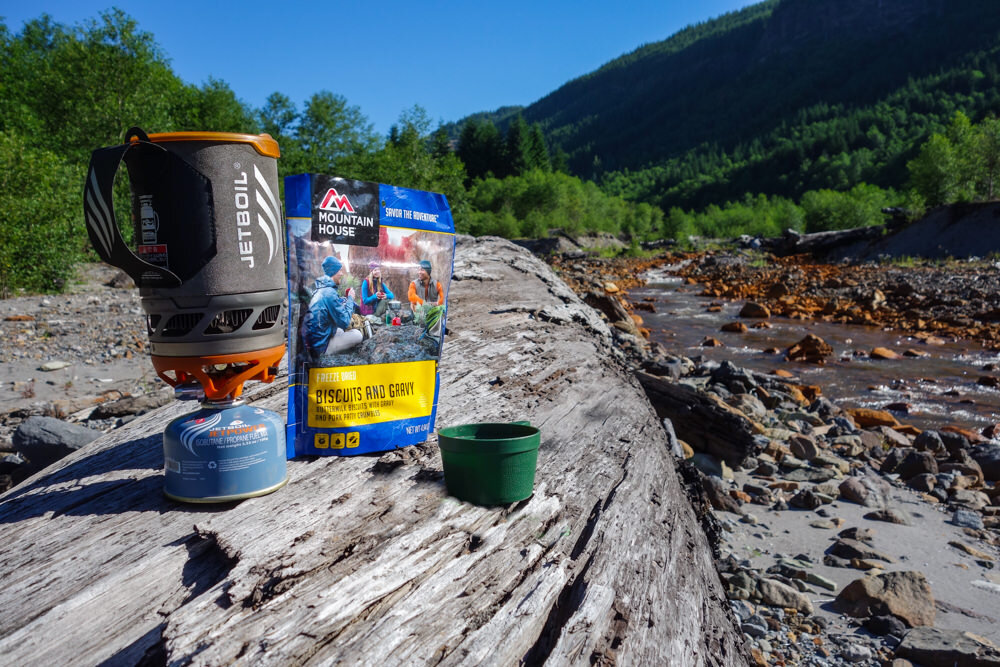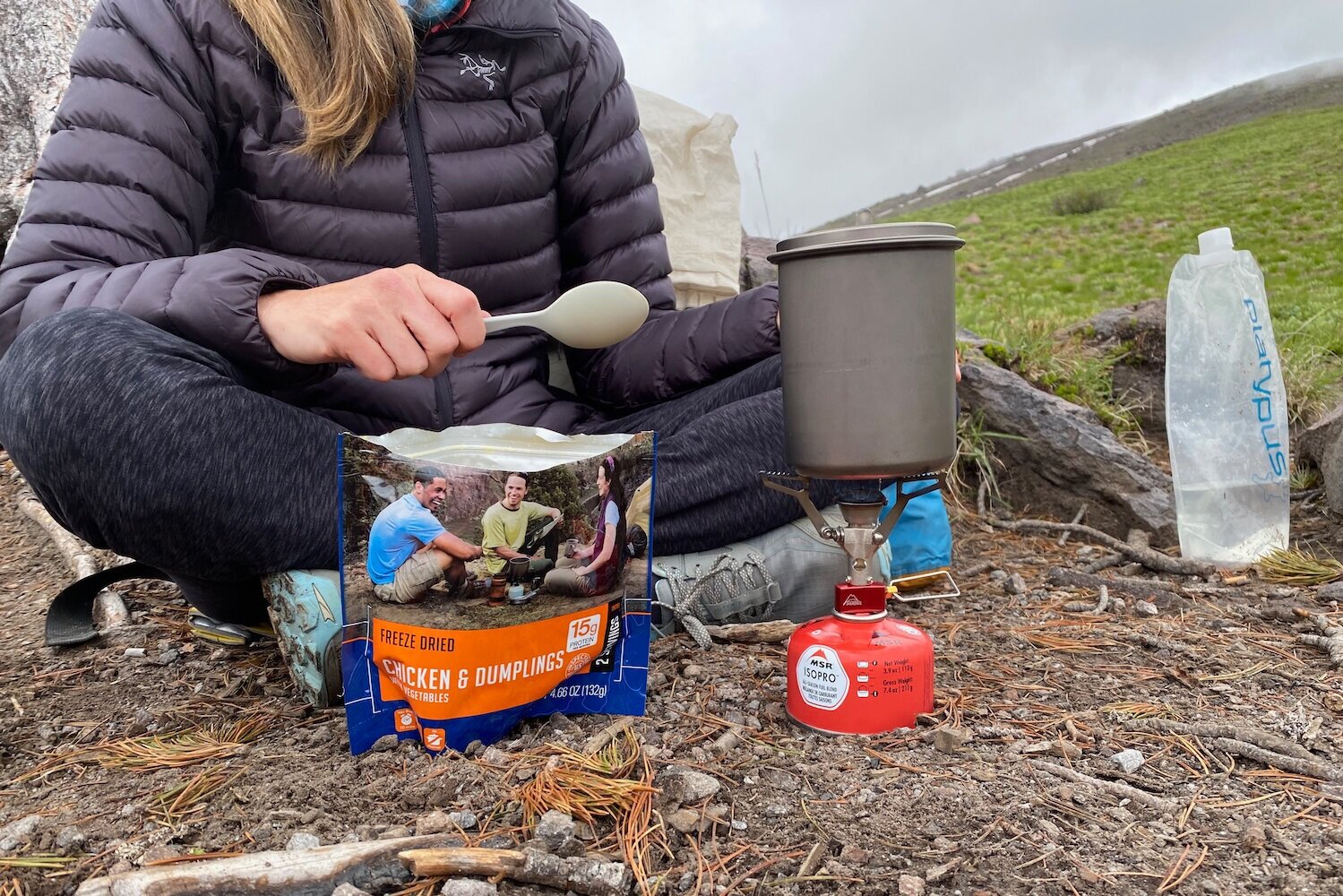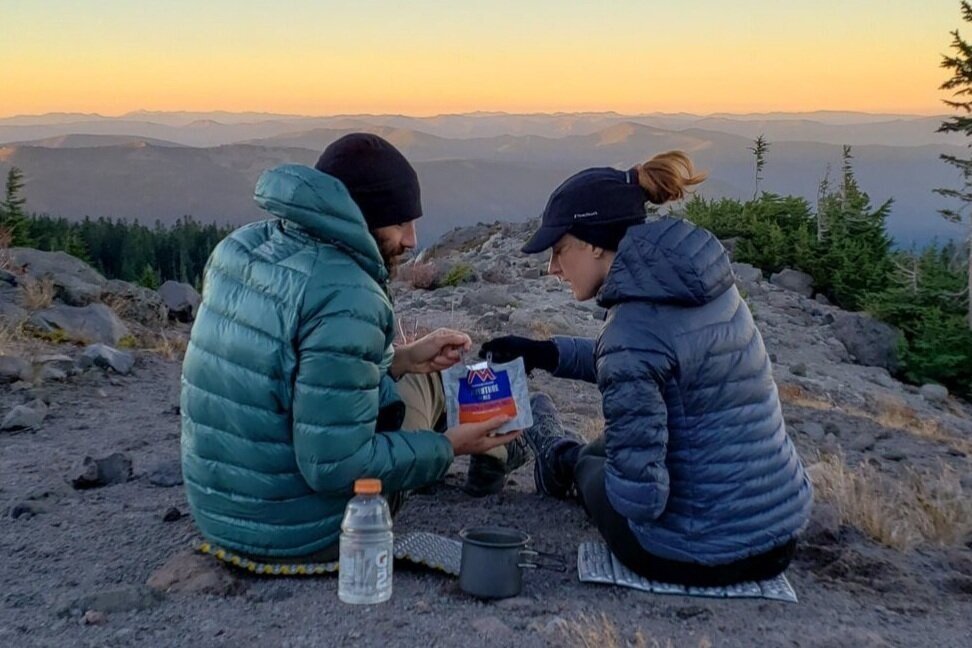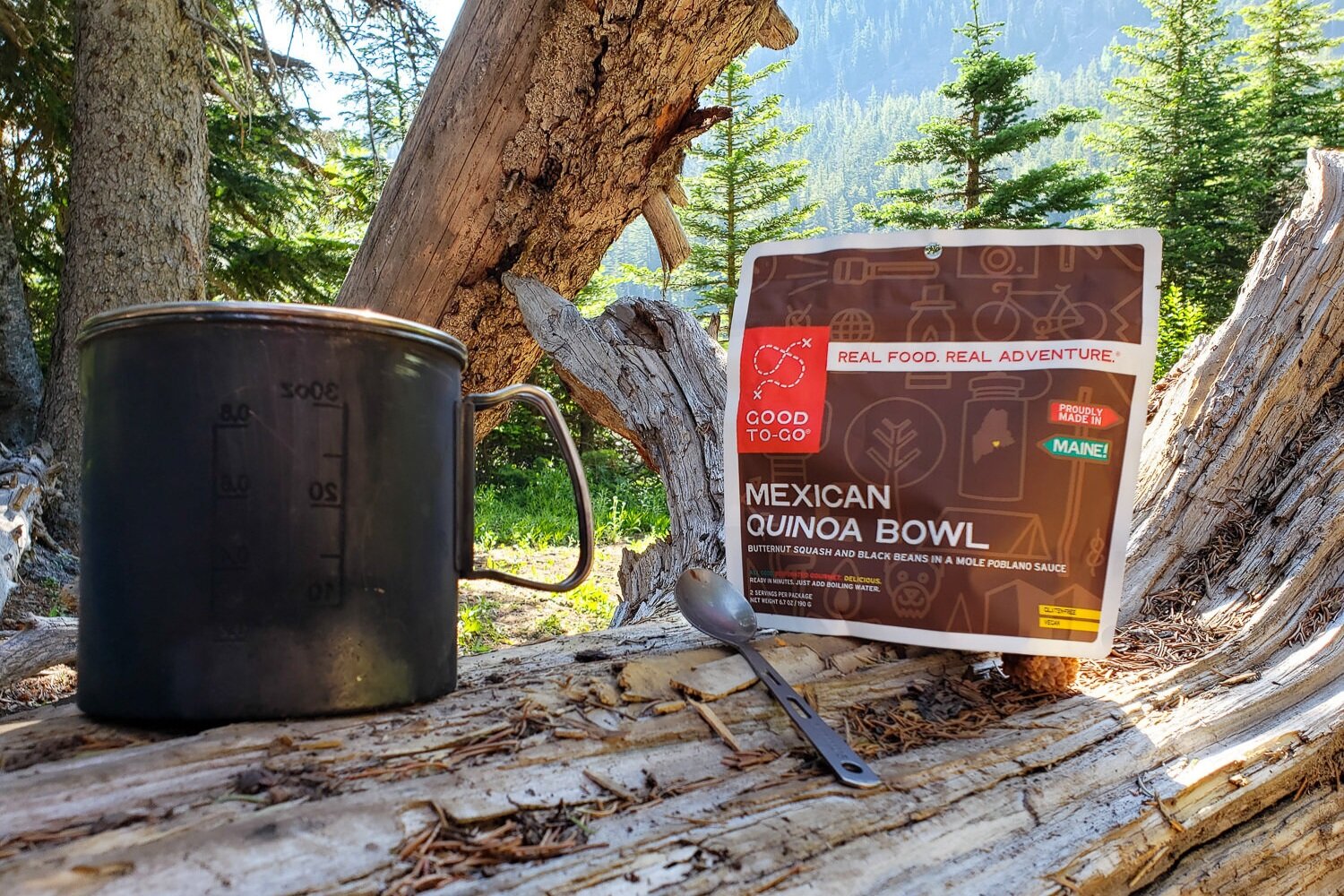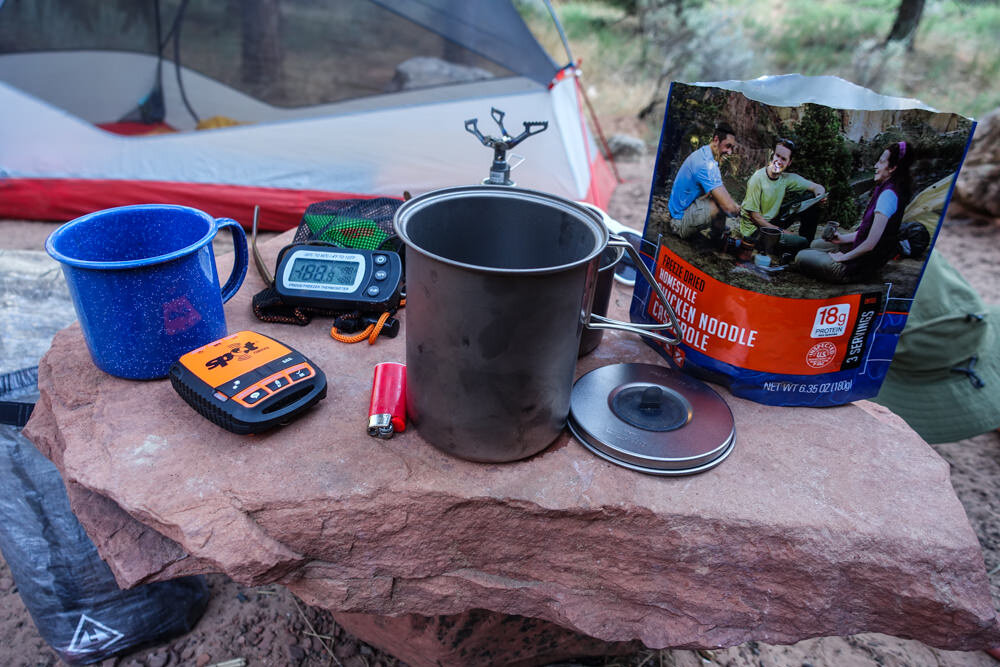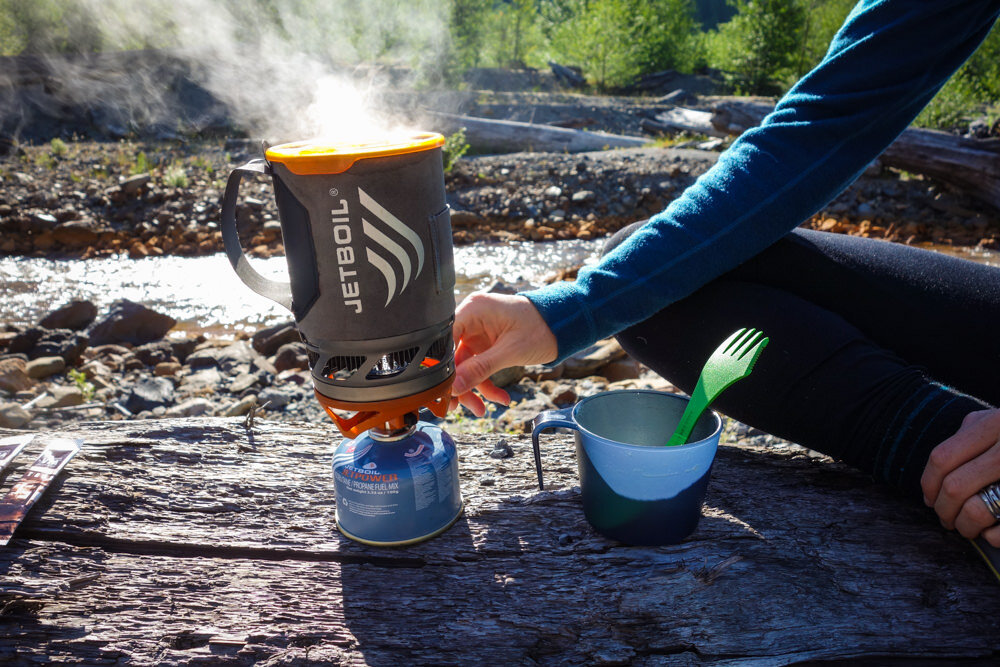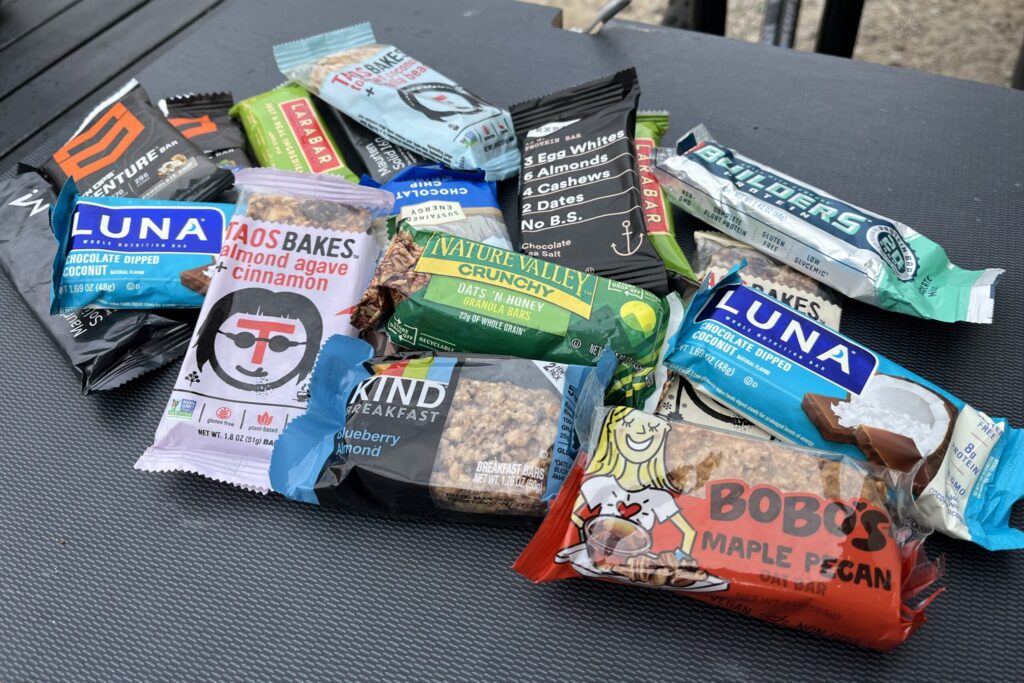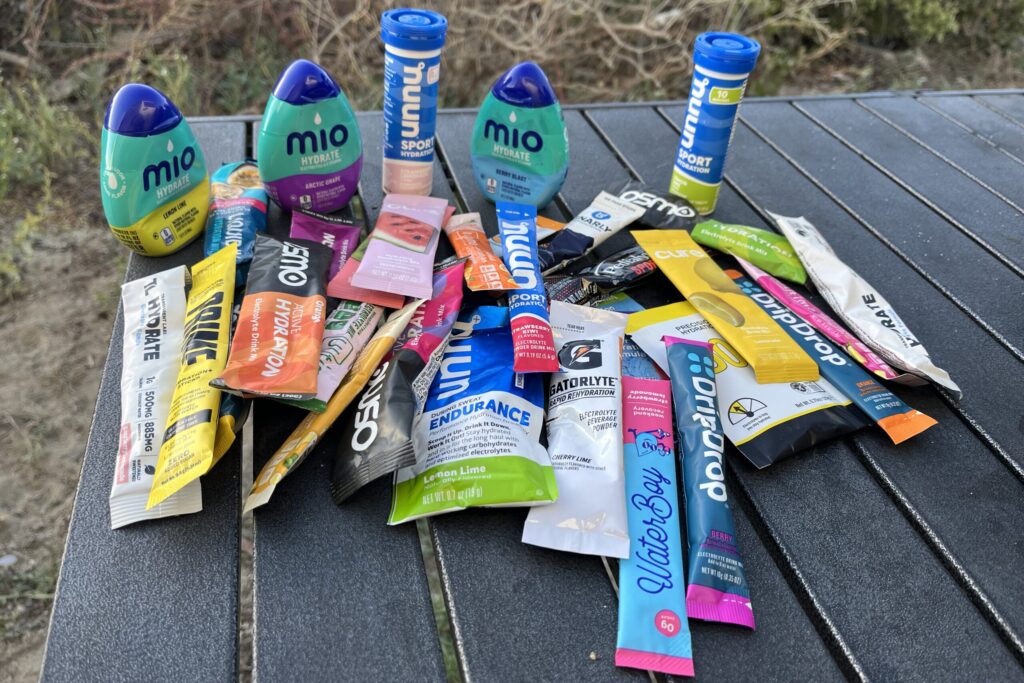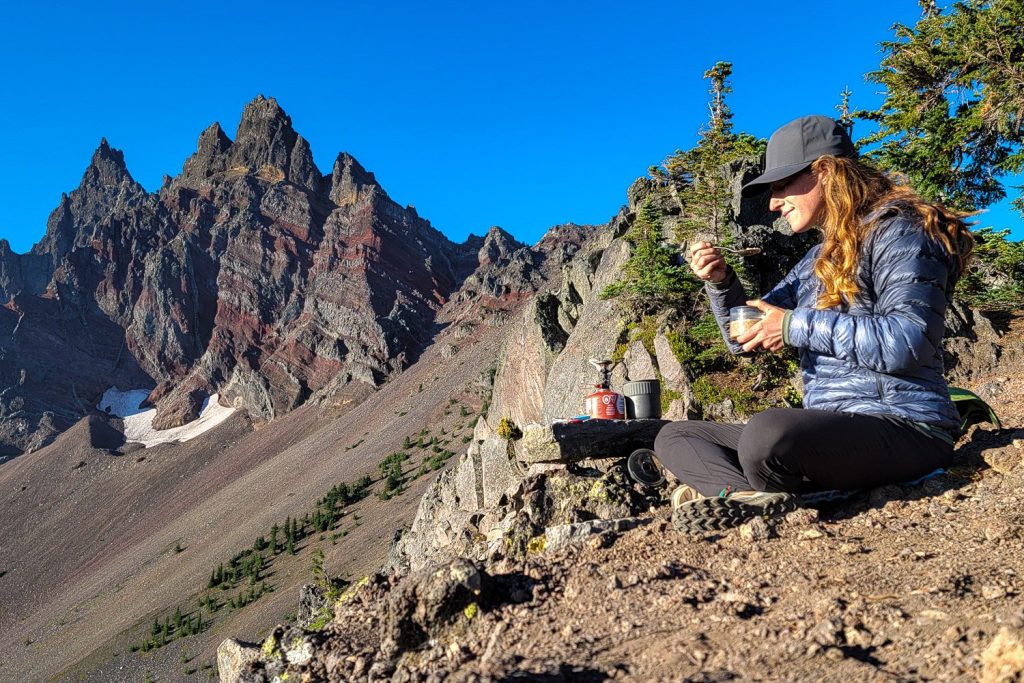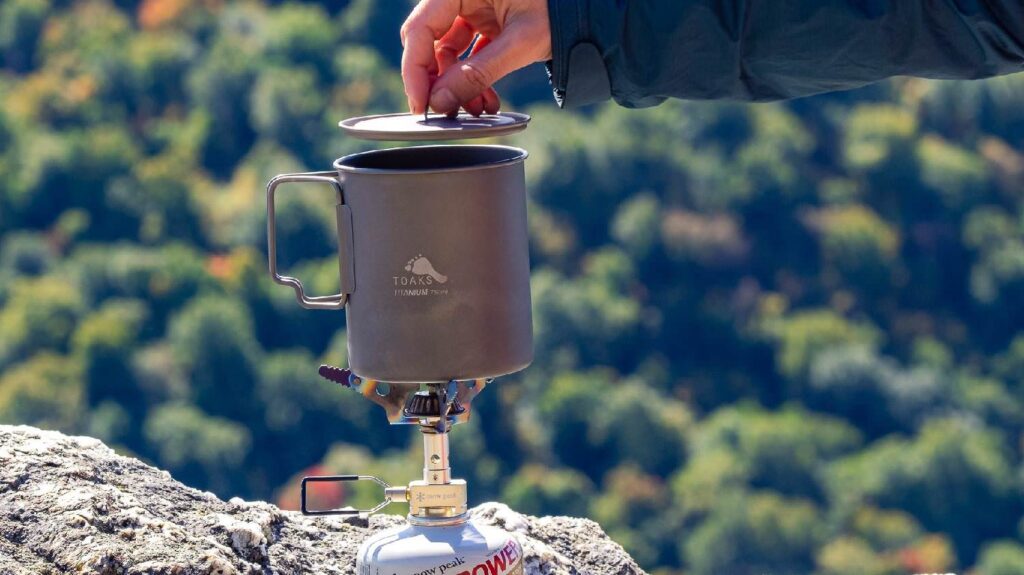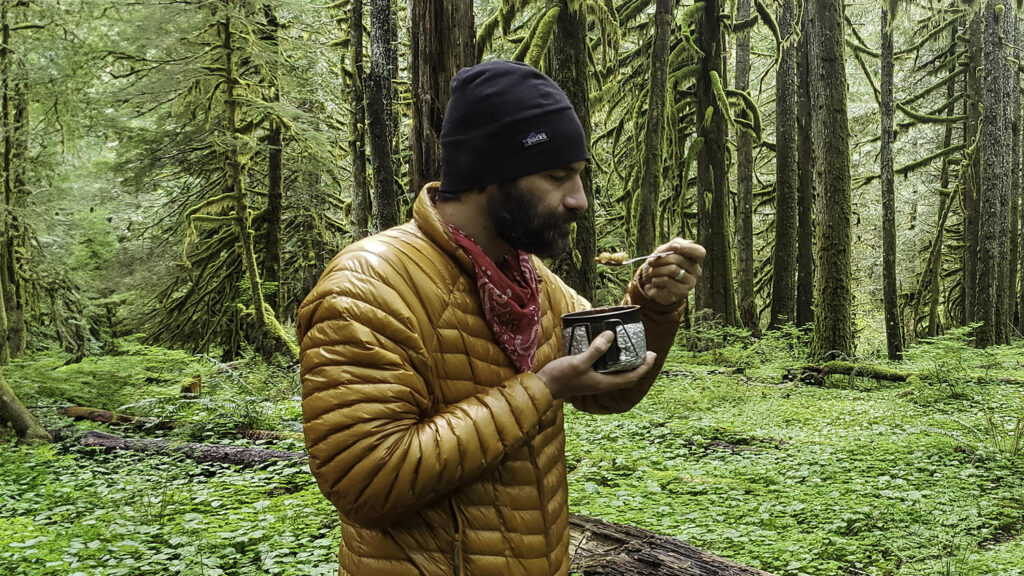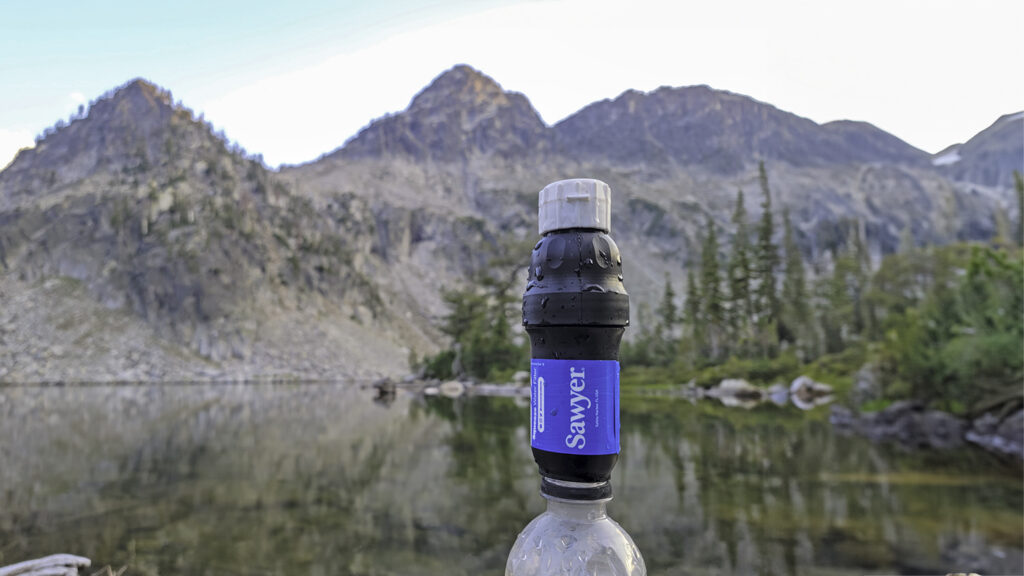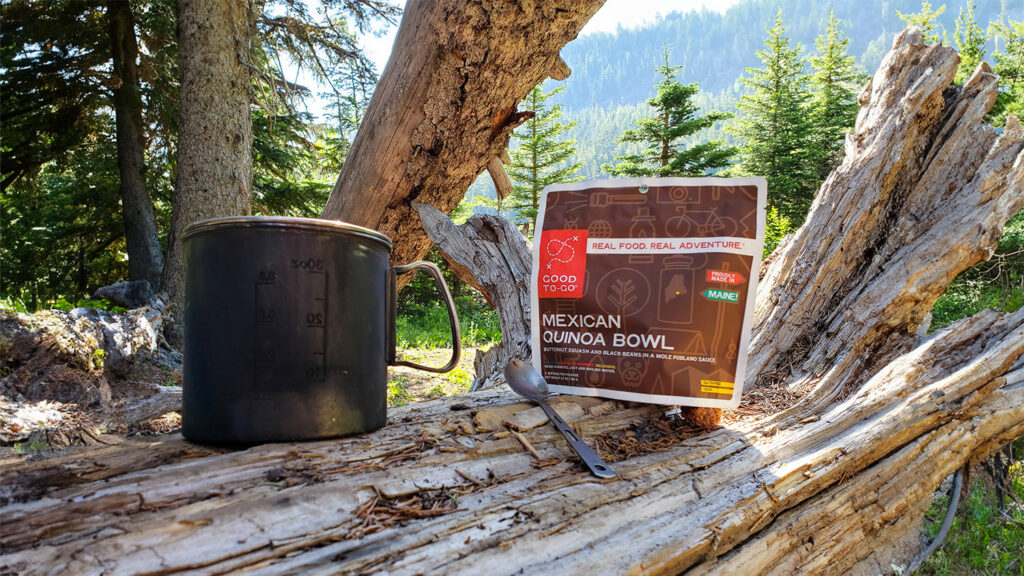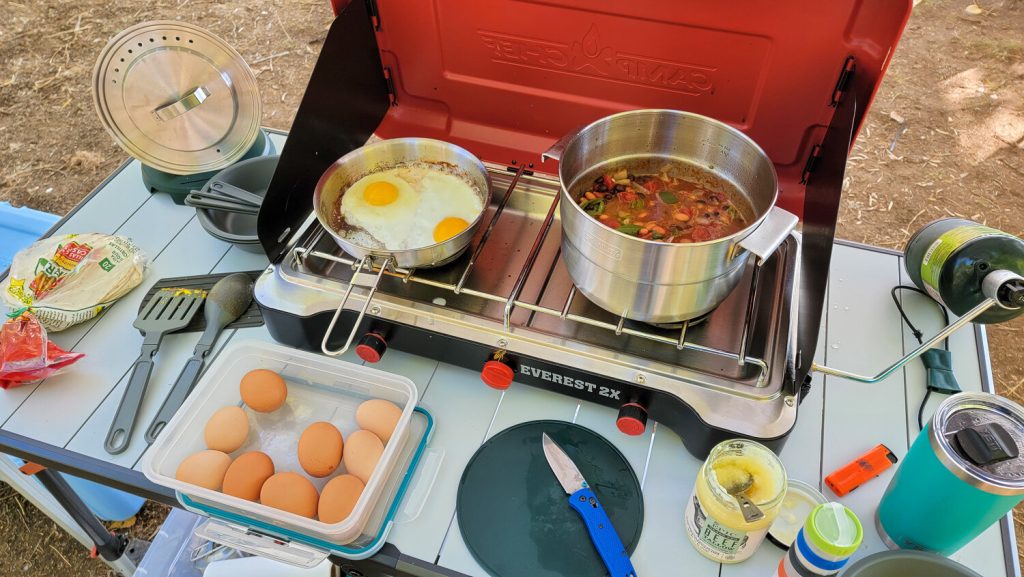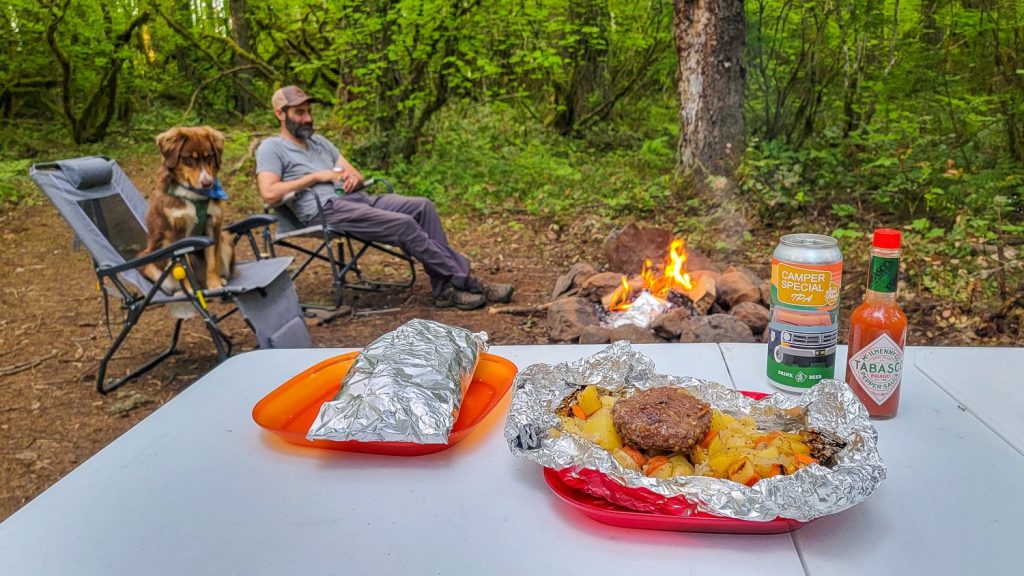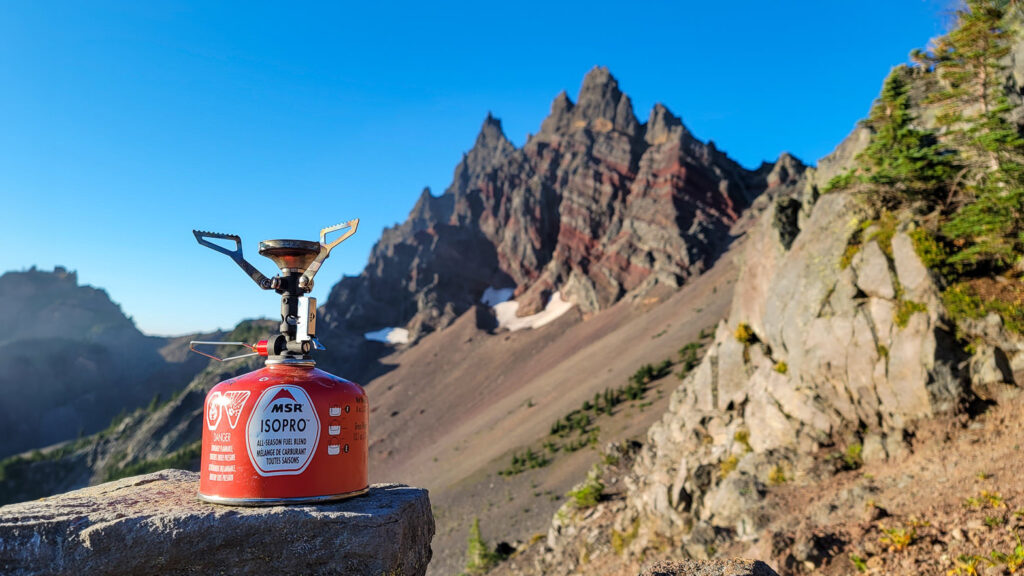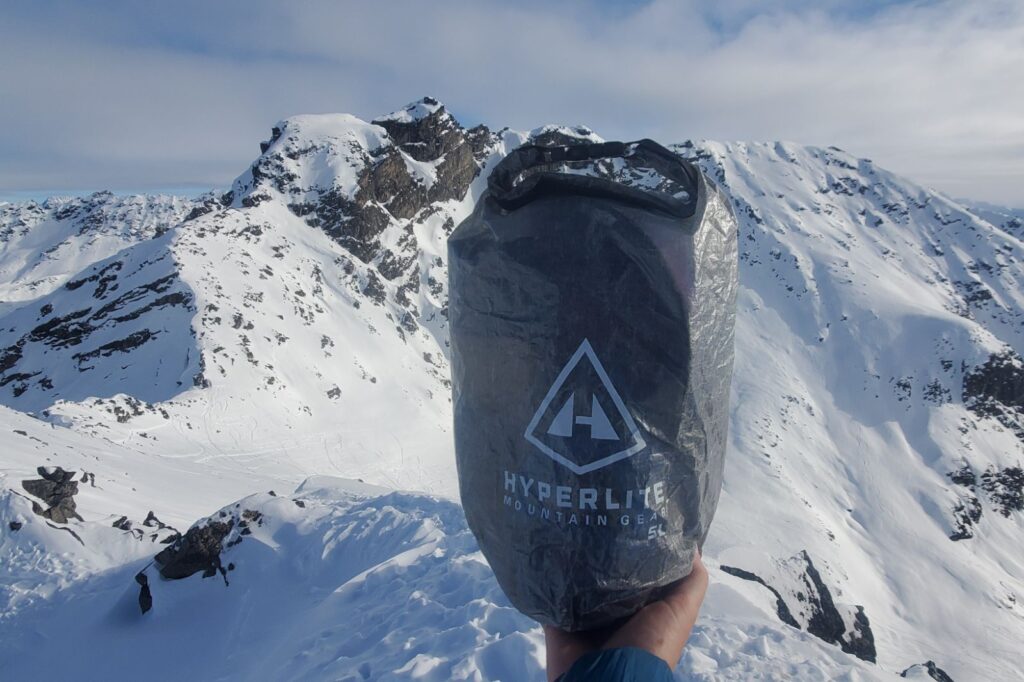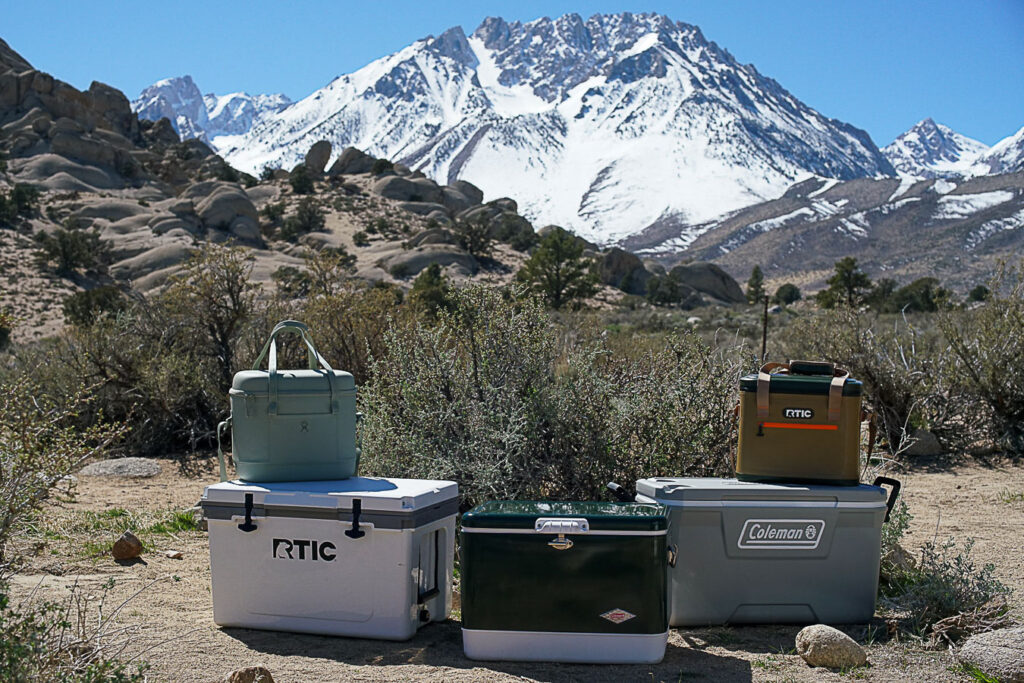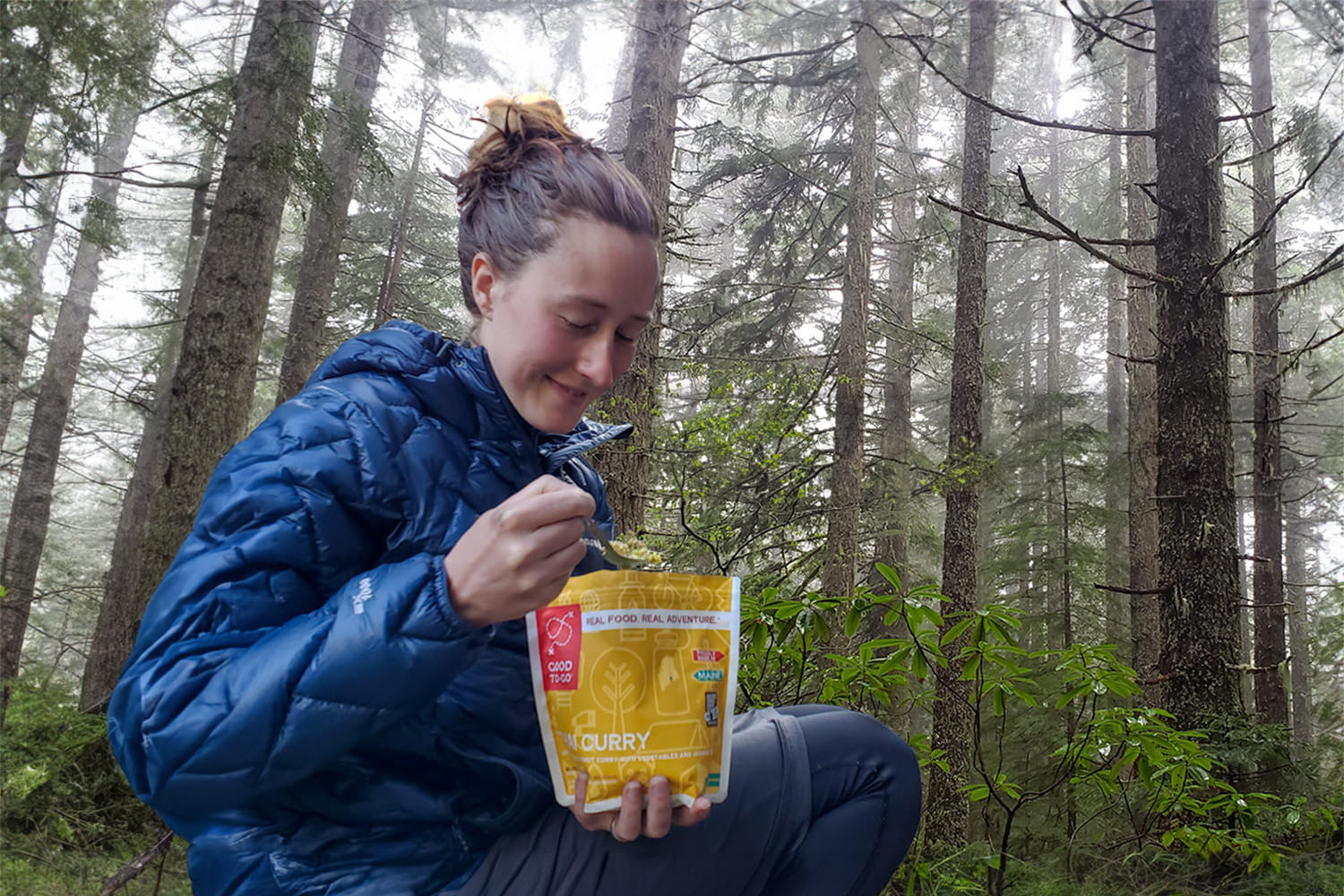
Freeze dried meals are some of the most popular meal options for hikers heading into the backcountry. Our team of hungry testers has chowed down on over 2,000 boil-in-a-bag meals over the years, and we definitely have our favorites. We take into account caloric density, ease of preparation, tastiness, and packaging to assess popular brands like Backpacker’s Pantry, Mountain House, PEAK, Good-To-Go, and more.
For more information on backpacking meal planning, check out our Lightweight Backpacking Food Guide. And if you fancy yourself an outdoor gourmand, we have Backpacking Meal Recipes & Food Dehydration Tips as well.
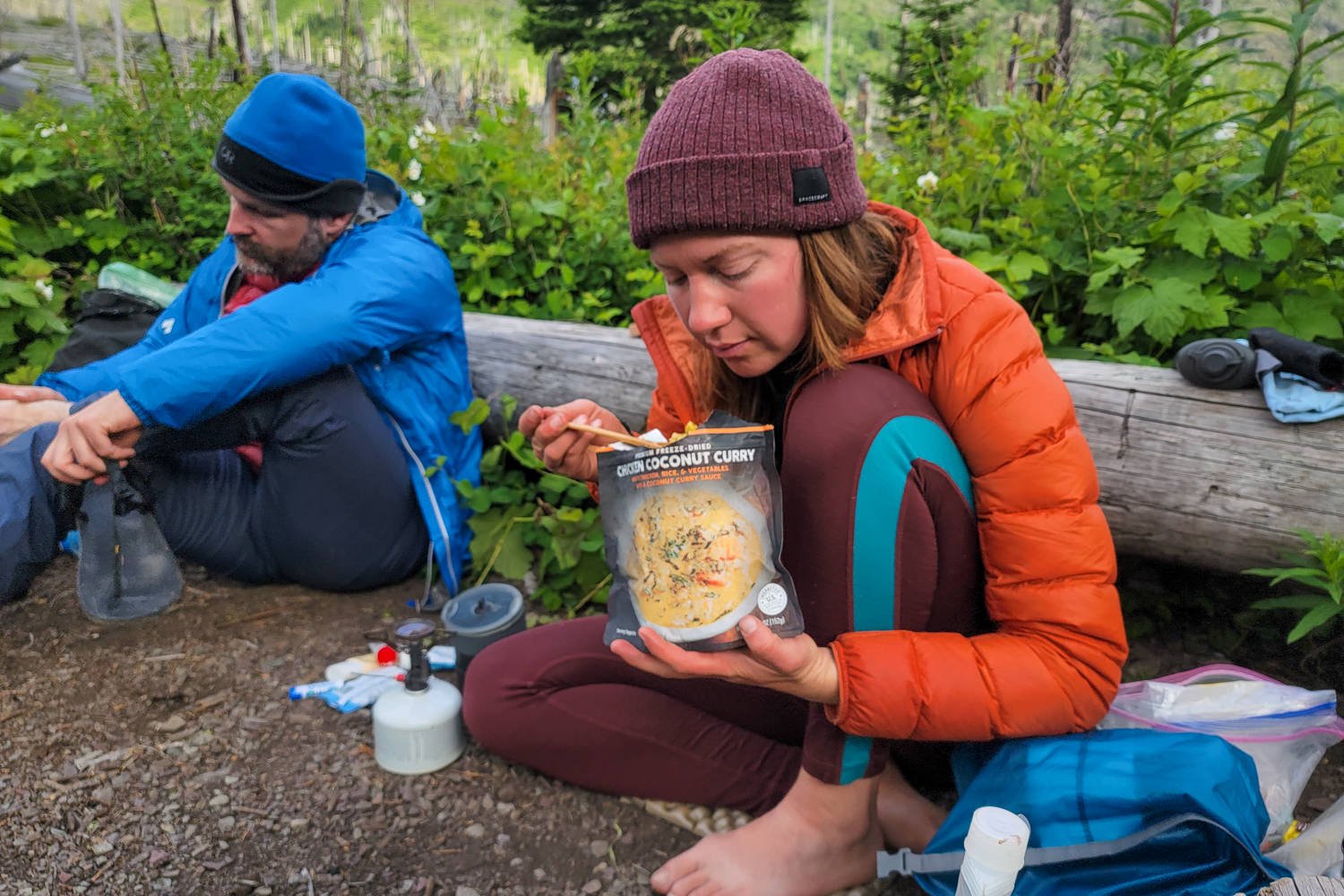
Squirrel Rating System
First established with dear friends while hiking the Zion Traverse, we use the CleverHiker Squirrel Rating System to assess each meal.
Every pouch we eat earns a squirrel rating score between 1 and 5 based on flavor, texture, and overall deliciousness. There are only whole squirrel ratings (because half a squirrel would be gross). We update this list every time we put on our snobby food critic pants and stuff our faces in the backcountry.
V = Vegan, GF = Gluten Free
Five Squirrel Meals
Did my grandma make this?! Our go-to favorite freeze dried meals for happy trail bellies.
Breakfast
Dinner
- PEAK REFUEL – Thai Chicken Coconut Curry
- PEAK REFUEL – Sweet Pork and Rice
- Mountain House – Chicken & Dumplings
- Mountain House – Chili Mac w/ Beef
- Mountain House – Creamy Macaroni & Cheese
- Mountain House – Biscuits & Gravy
- Mountain House – Beef Stroganoff
- Mountain House – Lasagna w/ Meat Sauce
- Mountain House – Pasta Primavera
- Backpacker’s Pantry – Three Cheese Mac & Cheese
- Backpacker’s Pantry – Pad Thai (V, GF)
- Backpacker’s Pantry – Cuban Coconut Rice & Black Beans (V, GF)
- Backpacker’s Pantry – Three Bean Veggie Stew (V, GF)
- Packit Gourmet – Dottie’s Chicken & Dumplings
- Packit Gourmet – Santa Fe Corn Pudding
- GOOD TO-GO – Thai Curry
- GOOD TO-GO – Smoked Three Bean Chili (V, GF)
- GOOD TO-GO – Indian Vegetable Korma (GF)
- GOOD TO-GO – Cuban Rice Bowl (V, GF)
- GOOD TO-GO – Chicken Pho (GF)
- MaryJanesFarm – Organic Bare Burrito
- MaryJanesFarm – Organic Shepherds Meat Pie
- Farm to Summit– Green Chili Mac & Cheese
- Pinnacle – Italian Sausage Zesty Tomato Sauce with Farfalle Pasta, and Parmesan
Dessert
- Backpacker’s Pantry – Dark Chocolate Cheesecake
- Backpacker’s Pantry – Blueberry Peach Crisp (GF)
- Packit Gourmet – Banana Puddin’
- Trailtopia – Apple Crisp
Four Squirrel Meals
Pretty darn tasty! However, some flavors and textures made us knock it down a squirrel.
Breakfast
- Mountain House – Breakfast Skillet
- Mountain House – Granola w/ Milk and Blueberries
- Nomad Nutrition – Cali Breakfast Bowl (V, GF)
Dinner
- Mountain House – Homestyle Chicken Noodle Casserole
- Mountain House – Italian Pepper Steak
- Mountain House – Chicken & Mashed Potatoes
- Mountain House – Chicken Fajita Bowl
- Mountain House – Spaghetti w/ Meat Sauce
- Backpacker’s Pantry – Three Sisters Southwestern Quinoa & Beans (V, GF)
- Backpacker’s Pantry – Fettuccini Alfredo w/ Chicken
- Backpacker’s Pantry – Chana Masala (V, GF)
- Backpacker’s Pantry – Mushroom Stroganoff
- Backpacker’s Pantry – Wild West Chili & Beans
- GOOD TO-GO – Kale & White Bean Stew (V, GF)
- GOOD TO-GO – Mexican Quinoa Bowl (V, GF)
- GOOD TO-GO – Bibimbap (V, GF)
- GOOD TO-GO – Classic Marinara w/ Penne (V, GF)
- Nomad Nutrition – Irish Shepherd’s Pie (V, GF)
- Nomad Nutrition – Spanish Paella (V, GF)
- Alpineaire – Creole Chicken Gumbo
- Packit Gourmet – Austintacious Tortilla Soup
- Packit Gourmet – Cajun Ranch Chicken Salad
- Packit Gourmet – Deli Roast Beef Wrap
- Packit Gourmet – West Memphis Grits Souffle
- Packit Gourmet – Big Easy Gumbo
Dessert
Three Squirrel Meals
Quite good still, but nothing to write home about. We might buy them again, but we weren’t amazed.
Breakfast
- GOOD TO-GO – Breakfast Hash (V, GF)
Dinner
- Mountain House – Spicy Southwest Style Skillet
- GOOD TO-GO – Herbed Mushroom Risotto (V, GF)
- GOOD TO-GO – Pad Thai (GF)
- Nomad Nutrition – Indian Red Lentil Stew (V, GF)
- Backpacker’s Pantry – Chicken Larb (GF)
- MaryJanesFarm – Cheddar Herb Pasta
Two Squirrel Meals
We are hungry hikers, so we’ll eat ’em for sure, but doesn’t hurt to have the spice kit on hand to spruce things up a bit.
Breakfast
Dinner
- Backpacker’s Pantry – Kathmandu Curry (V, GF)
- Mountain House – Chicken Teriyaki w/ Rice
- MaryJanesFarm – Organic Lentils, Rice & Indian Spice (V)
- Nomad Nutrition – Caribbean Curry (V, GF)
One Squirrel Meals
We’d take it out of a hiker box if it was free, but we definitely opt for other packets on this list.
Critical Backpacking Meal Considerations
ENERGY-TO-WEIGHT RATIO
Backpacking foods are generally calorically dense and relatively lightweight, which is part of what makes freeze-dried meals an attractive option. The process of freeze-drying a meal removes 80% of its water weight while retaining a high level of calorically-dense nutrition. Most meal pouches range between 500-900 calories and weigh around 5-9 ounces. This puts them in the 100-130 calorie-per-ounce ratio, which isn’t spectacular, but is still quite good – and, in our opinion, well worth it for the tastiness. For reference, peanut butter – the quintessential backpacking staple – is about 170 calories per ounce.
One drawback to consider is that while they are lightweight, they aren’t always compact. Freeze dried meals can take up quite a bit of extra space beyond an equivalent homemade meal in a Ziploc bag. This can be especially limiting if you are carrying a hard-sided food storage system (i.e. a bear can). Some hikers like to poke a tiny pinhole at the top of each bag to release the air and compress the pouches for carrying. This is fine, but the hole can get larger unintentionally and spice powder can puff out onto other gear (and create smells for animals to notice).
ARE THEY NUTRITIOUS?
The process of freeze drying can retain up to 90% of the nutrients, but the product will only be 20% of its original weight. That said, most freeze dried meals are packed with sodium and unrecognizable ingredients. We’d put them into the “sorta nutritious” camp, but if you compare them to the most popular alternatives – ramen, instant potatoes, and pasta sides – they start to look pretty dang healthy (and tasty too!). Certain brands, such as Mary Janes Organic and Good To-Go, use recognizable ingredients for those who want to limit ultra-processed ingredients.
CONVENIENCE
These pouches are almost universally faster and easier to prepare than homemade hot trail meals. Plus, there’s zero clean up! Boil water, tear open the pouch (remove that silica packet!), pour in the water, seal it up, cozy up in your sleeping bag while you wait, and enjoy! Not cleaning a pot at the end of a long day can make a big difference.
Having said that, some brands have superior pouches. Backpacker’s Pantry tends to have a thicker, better-insulated pouch material than others that might use a thinner food-safe plastic or coated paper. We recommend double-checking the cooking instructions anytime you try a new brand to make sure the pouch is actually cook-safe.
PRICE
Freeze dried meals are not cheap, especially considering inexpensive alternatives (mashers, pasta sides, ramen, etc). If you’re spending months on the trail thru-hiking, meals like these will probably be too expensive to be sustainable. But for the casual backpacker, meals like this can add a lot of value, convenience, and enjoyment.
Pro Tip: REI has a discount when you buy 8 or more backpacking meals.
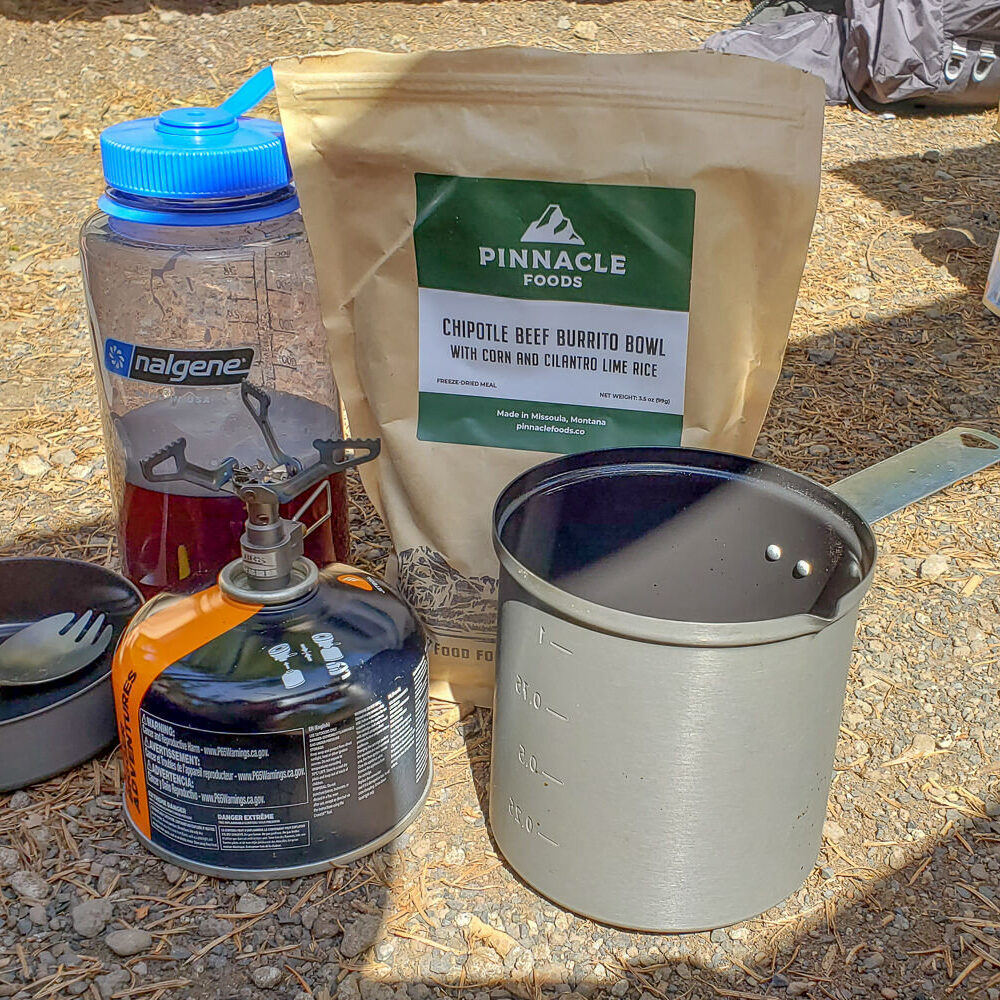
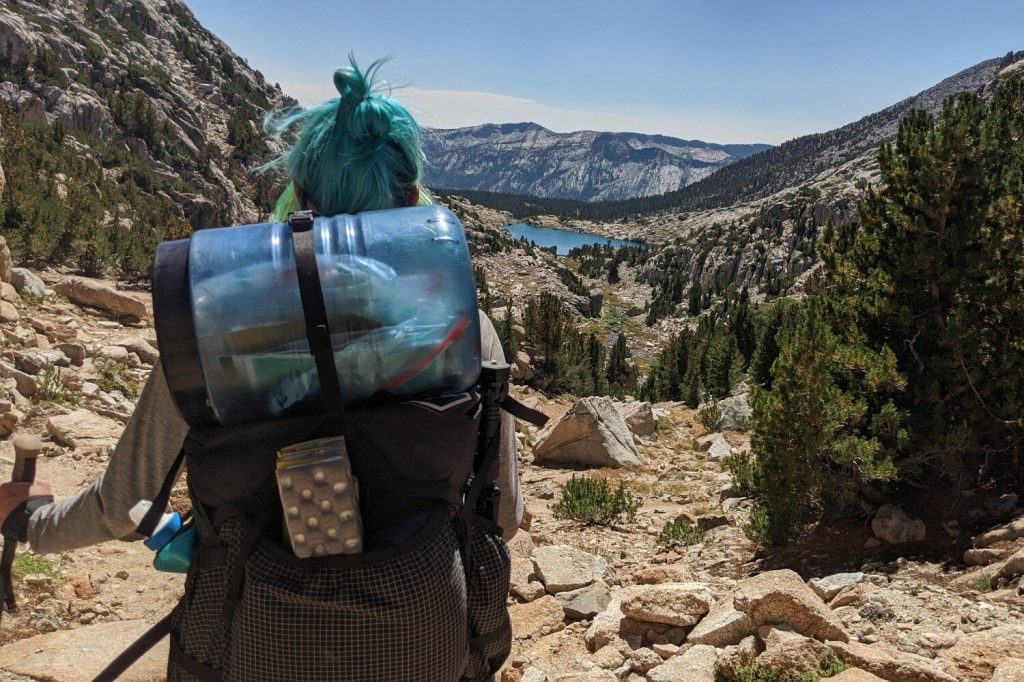
What’s In Our Camp Kitchen?
When we head out on backcountry trips, these are the items usually found in our packs. For more information on our favorite camp kitchen items, check out our lists of the Best Backpacking Stoves and Best Backpacking Cookware.
- Stove System: JetBoil MiniMo & JetBoil Flash
- Ultralight Stove: BRS Stove
- 1-2 Person Cookpot: Snow Peak Mini Solo Cookset
- Group Cookpot: MSR Ceramic Pot
- Spoon: TOAKS Titanium Long Spoon
- Cup: TOAKS Titatium 450 ml Cup
- Food Storage: Ursack & BearVault BV500
